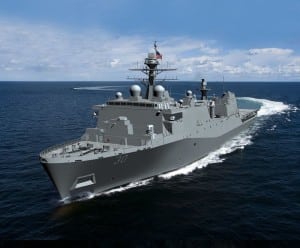
The Marine Corps is already straining to meet crisis response requirements due to a lack of amphibious forces while the Navy and Marine Corps disagree on funding the future force. Testifying before the Senate Armed Services Seapower subcommittee on April 26, Lt. Gen. Karsten Heckl, Deputy Commandant for Combat Development and Integration, said the Marine Corps being unable to sortie forces early to respond to Russia’s war with Ukraine is an example of how the current amphibious ship force is…

 By
By 











